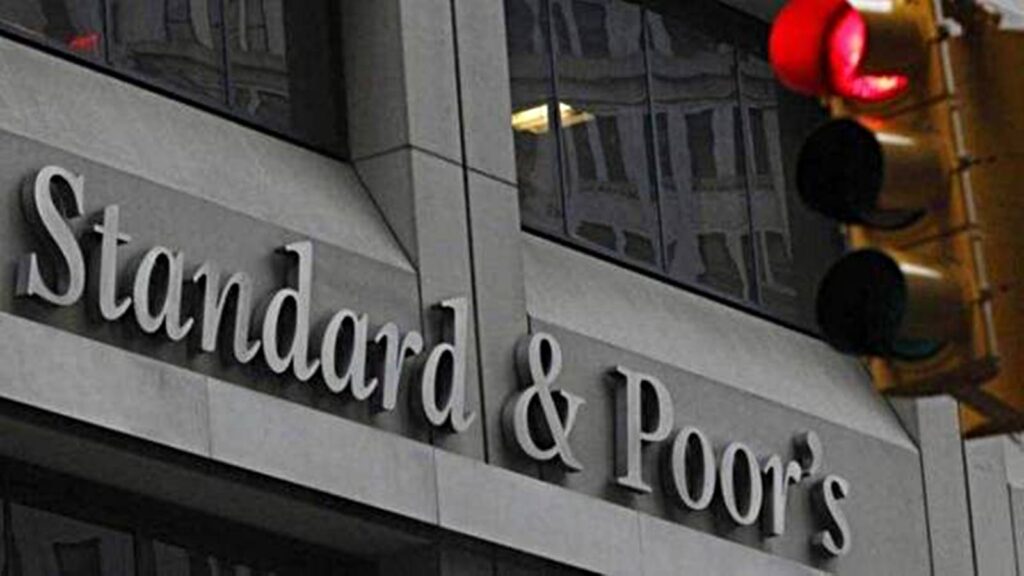970x125
S&P Global Ratings on Thursday upgraded its assessment of India to BBB from BBB-, with a stable outlook, on the back buoyant economic growth and expectations of inflation being anchored. With the government also showing a commitment to improving the state of its finances and the quality of its expenditure, the agency said the factors had “coalesced to benefit credit metrics”.
970x125
“India remains among the best performing economies in the world. It staged a remarkable comeback from the pandemic with real GDP growth over fiscal 2022 to fiscal 2024 averaging 8.8 per cent, the highest in Asia-Pacific. We expect these growth dynamics to continue in the medium term, with GDP increasing 6.8 per cent annually over the next three years. This has a moderating effect on the ratio of government debt to GDP despite still-wide fiscal deficits,” S&P analysts said in a statement.
The rating upgrade will be a boost to Indian authorities, who have aggressively pursued the three global agencies — S&P, Moody’s, and Fitch Ratings — over the last several years for higher ratings that, in the government’s opinion, better reflect the country’s fundamentals. In fact, the The Centre has also expressed its displeasure and said their methodologies are biased against emerging economies, with the Economic Survey for 2020-21 containing a chapter titled ‘Does India’s Sovereign Credit Rating reflect its fundamentals No!’.
Reacting to the upgrade, the finance ministry posted on X that the government “welcomes the decision” which comes 18 years after S&P had last raised its assessment of India in January 2007, when it had moved up its rating to BBB-.
“India has prioritised fiscal consolidation, while maintaining its strong infrastructure creation drive and inclusive growth approach, that has led to the upgrade. India will continue its buoyant growth momentum and undertake steps for further reforms to attain the goal of Viksit Bharat by 2047,” the finance ministry further said in its post on X.
While still at the lowest investment-grade rung, S&P’s BBB rating brings India one step closer to the coveted A-level category, which is an indicator of higher creditworthiness to investors globally. A higher credit rating allows the government to borrow money at a lower rate of interest.
 A higher credit rating allows the government to borrow money at a lower rate of interest.
A higher credit rating allows the government to borrow money at a lower rate of interest.
The ratings upgrade by S&P comes a day after it said the US’ 50 per cent tariff may not hurt India’s growth rate much. The effect of the US tariffs on the Indian economy will be “manageable”, S&P’s analysts said on Thursday.
Story continues below this ad
“India is relatively less reliant on trade and about 60 per cent of its economic growth stems from domestic consumption. We expect that in the event India has to switch from importing Russian crude oil, the fiscal cost, if fully borne by the government, will be modest given the narrow price differential between Russian crude and current international benchmarks,” S&P said.
Improving public finances
Over the years, ratings agencies have repeatedly cited India’s high government deficits and debt levels as a key weakness, with S&P saying on Thursday that India’s “weak fiscal settings had always been the most vulnerable part of its sovereign ratings profile”. But with the economic recovery “now well on track”, the Indian government can project a more “concrete” consolidation of its finances.
According to S&P, the combined fiscal deficit of the Central and state governments is seen at 7.3 per cent of GDP in 2025-26, which it expects to decline to 6.6 per cent by 2028-29.
Even as the fiscal deficit declines, the quality of government expenditure is seen further improving, continuing the trend of the last half decade over which the funds allocated for infrastructure has increased. As per Union Budget 2025-26, the Centre has targeted a capital expenditure of Rs 11.21 lakh crore for the current fiscal, up from Rs 3.36 lakh crore spent in 2019-20.
Story continues below this ad
“Adding capital spending by states, total public investment in infrastructure is estimated at around 5.5 per cent of GDP, which is on par or higher than sovereign peers. We believe the improvements in infrastructure and connectivity in India will remove chokepoints, which are hindering long-term economic growth,” S&P said.
In terms of debt, S&P expects net Central plus state debt to decline to 78 per cent of GDP by 2028-29 from 83 per cent in 2024-25, bringing it closer to pre-pandemic levels.
The Centre has targeted a reduction in its debt-to-GDP ratio to 49-51 per cent by 2030-31 from 57.1 per cent in 2024-25. States, however, do not have a debt target.
Growth and inflation
While India’s GDP growth has edged lower recently — the 6.5 per cent growth recorded in 2024-25 was the lowest in four years, with growth in the current fiscal also seen at the same level, as per the Reserve Bank of India (RBI) — S&P said the economic expansion was now “normalising toward a more sustainable level with good momentum”.
Story continues below this ad
“We recognise, however, that India’s high growth rates need to be sustained over a long period of time for the economy to create sufficient jobs, reduce inequality, and reap the full benefit of its favorable demographics,” S&P analysts added.
On the inflation front, S&P said the RBI’s record of inflation management had been burnished by headline retail inflation staying broadly within the 2-6 per cent target range. The external position, meanwhile, is seen as key to India’s credit profile, with current account deficits likely to remain small over the next few years.
970x125

